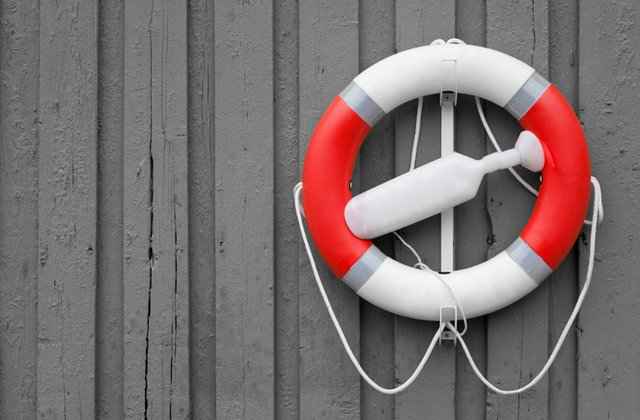
Life insurance is usually last on the list of important-but-necessary items people want to spend money on, because, let’s face it, no one wants to dwell on the circumstances in which it could come in handy. Now, in the wake of the Great Recession, people have even less insurance than before, which leaves families unprepared to cope with potential tragedy.
The gap between the amount of life insurance Americans actually have and the amount they think they need has now widened to about $320,000, according to a recent survey of 1,004 respondents by New York Life Insurance. Respondents on average said they needed about $540,000 worth of insurance, but they only had $220,000 last year.
Similarly, between 2004 and 2010, the number of people with life insurance dropped from 78 percent to 70 percent, says Bob Kerzner, CEO and president of LIMRA, a financial services industry group. “So three in 10 households in the United States have absolutely no life insurance whatsoever,” he says. He attributes the large drop partly to the recession and the fact people don’t – or at least think they don’t – have the money to afford a life insurance policy.
Kerzner says people tend to think that life insurance is about three times more expensive than it actually is. “There’s the perception that it costs more than it does, so they think it won’t fit into their budget, even when it might,” he adds. LIMRA surveys have also found that about half of households say they believe they don’t currently have enough life insurance.
Millennials , who are now in their 20s and early 30s, are particularly likely to be underinsured. A LIMRA survey released last month found that if the primary breadwinner were to die, six in 10 Gen X and Gen Y Americans said their households would suffer financially, versus just over one-third of baby boomers. The survey, based on 6,000 respondents, found that Gen Y is also less likely to have life insurance compared to older generations. Just one-third have individual life insurance policies, compared to about half of baby boomers.
“Young people in general tend to assume they’re absolutely invulnerable,” says Steven Weisbart , chief economist for the Insurance Information Institute. But young adulthood is also an ideal time to lock in low rates on policies, he adds. “When you’re young, it’s really cheap … This is a good time to buy,” he says.
Denise Flannery, senior vice president at Penn Mutual, says she thinks the insurance industry needs to do a better job explaining the benefits of taking out policies, especially at a young age. In addition to death benefit protection, certain types of policies can also offer the ability to build cash value over one’s lifetime, although the death benefits tend to be the primary reason people take out life insurance, she explains. “I try to make life insurance into something optimistic, that makes you feel good, because you’re doing a good thing,” she says.
She also points out that millennials are growing up; many of them now have family responsibilities that make life insurance particularly important. According to the U.S. Census Bureau, half of millennial women between ages 20 and 34 have at least one child, and over half of recent births to twenty-something mothers have not been first births. In other words, their families are growing quickly.
LIMRA’s Kerzner also says many Americans find the process of taking out life insurance to be challenging. There’s paperwork, health checks, decisions about what kind and what amount to make – it can be overwhelming. “They aren’t sure of how much and what kind to buy, and it feels like a safer decision to not make a decision,” he says.
New developments in the industry, though, might make it easier. Kerzner says in the next few years, consumers will be able to purchase life insurance more quickly. Instead of taking 30 to 60 days to get a policy approved, companies will issue $250,000 or even $500,000 policies without blood tests, for example. “As companies get more comfortable with these approaches, the market will change and accessibility will be greater,” he says. If a person can take out a policy in 10 minutes, then he’s much more likely to do so, instead of letting the task linger on his to-do list indefinitely.
As for the question of how much life insurance to take out, the answer depends on who you ask and your own situation, which is why many financial experts recommend working with a financial professional to get the right answer for you. “My answer is [you need] no less than 10 times your income, but I don’t like that answer. It’s a shortcut,” Weisbart says. For a more accurate answer, he suggests taking time to think through all the costs you would want life insurance to pay for. “You can probably at least get a good approximate in 20 minutes,” he adds.
New York Life spokesman William Werfelman says it has also never been more affordable to buy life insurance. A healthy 35-year-old can buy a 20-year term policy with a $250,000 payout for around $220 a year, he says. According to the New York Life survey, Americans want their life insurance to last around 14 years beyond the breadwinner’s death but in reality they only have enough to last three years after the breadwinner's death. That means the payout might need to be close to 15 or 20 times the breadwinner’s salary, rather than the common rule of thumb of seven to 10 times the salary. (New York Life has an online calculator to help people make this calculation, and the website lifehappens.org, a nonprofit sponsored by the insurance industry, also offers tips and calculators.)
Taking the time to crunch some numbers could buy some peace of mind, even if you hope you never actually have to use the policy.
Compare Offers
Compare Offers



Post a Comment